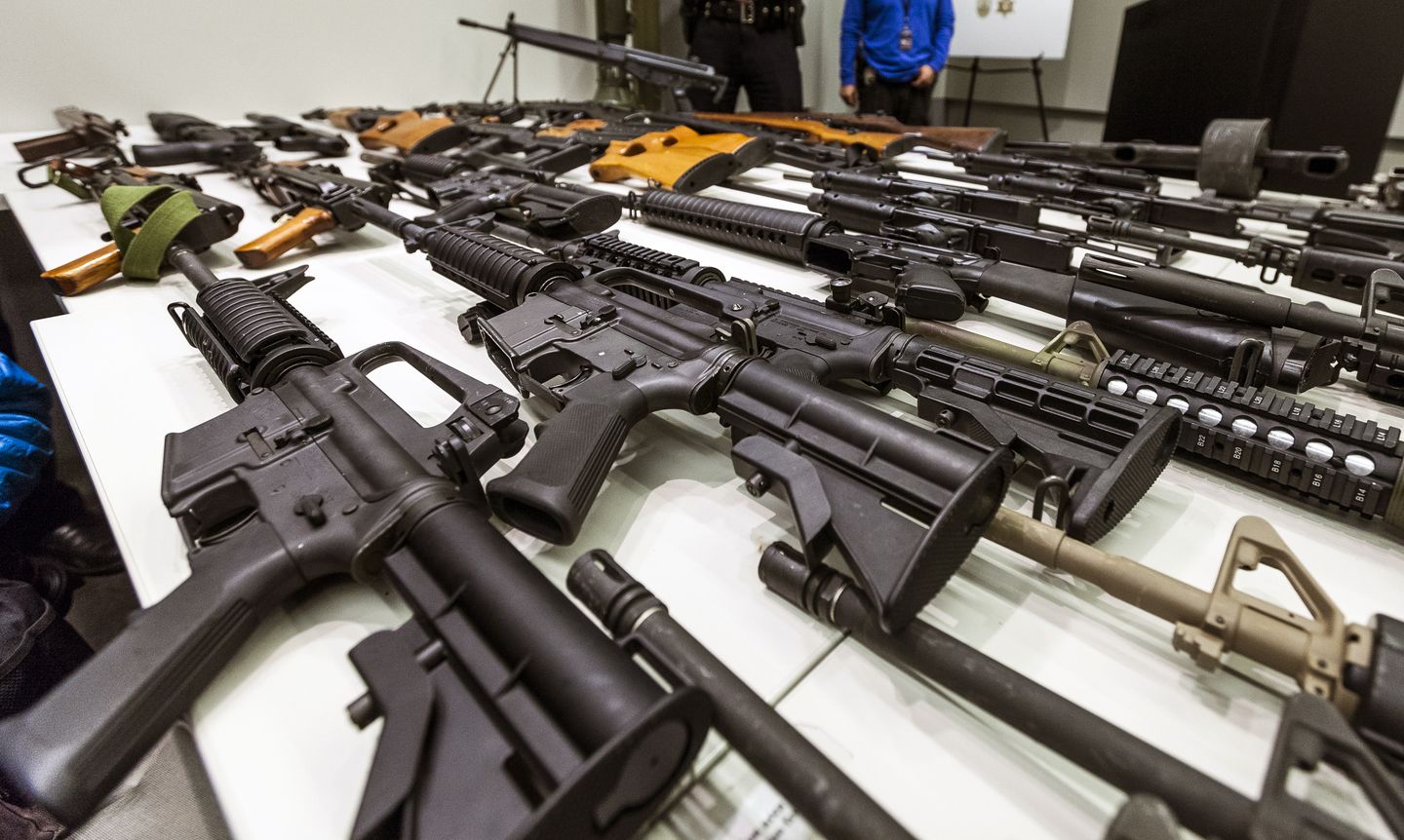
The Supreme Court declined Monday to hear a challenge to Maryland’s “assault weapons” gun ban law, allowing a sweeping prohibition on the sale of the popular AR-15-style rifle to remain in place.
Gun rights advocates had been pleading with the justices to take the case, saying it was time for the high court to issue a definitive ruling about AR-style rifles and how they fit into the court’s new direction in recent years on gun rights.
The justices declined, though several made clear that the issue will come back — soon — and Maryland’s law may still fall.
Justice Brett M. Kavanaugh, a long-time Maryland resident who sided with colleagues in declining to hear the case, signaled he’s waiting for other lower courts to grapple with the issue but said Maryland’s ban — and the lower court ruling upholding it — are “questionable.”
“Although the court today denies certiorari, a denial of certiorari does not mean that the court agrees with a lower-court decision or that the issue is not worthy of review,” he said in a statement. “Additional petitions for certiorari will likely be before this court shortly and, in my view, this court should and presumably will address the AR–15 issue soon, in the next term or two.”
Tens of millions of AR-15s are in circulation already and they are legal in more than 40 states, which makes the states that do purport to ban them relative outliers.
Three members of the high court, Justices Clarence Thomas, Samuel A. Alito Jr. and Neil M. Gorsuch, said they thought the high court should have heard this case now.
Justice Thomas said that as long as the justices leave the issue undecided, the federal government could step in and issue a nationwide ban on AR-15s by deciding they are too close to machine guns.
“I would not wait to decide whether the government can ban the most popular rifle in America,” he said. “We have avoided deciding it for a full decade.”
The issue is whether semiautomatic weapons, defined as each trigger pull firing a round, can be considered too close to automatic weapons, or machine guns, where holding the trigger down once can produce a constant stream of fire.
Automatic weapons have generally been deemed to fall outside the guarantees of the Second Amendment, but some courts have upheld bans on some types of semiautomatic weapons, citing varying reasons.
Maryland adopted its ban in 2013, citing a wave of mass shootings.
It covers not only the AR-15 but also the AK-47 and a .50 caliber rifle, all of which the state said were “assault weapons” and thus “dangerous and unusual.” The Supreme Court has held that dangerous and unusual weapons are not protected by the Second Amendment.
The 4th U.S. Circuit Court of Appeals, in a forceful opinion last year, upheld the state’s law.
“It is but another example of a state regulating excessively dangerous weapons once their incompatibility with a lawful and safe society becomes apparent, while nonetheless preserving avenues for armed self-defense,” wrote Judge J. Harvie Wilkinson, a Reagan appointee.
In an epic rant about guns, he said the AR-15 is simply too dangerous to treat as a normal gun.
“For these reasons, we decline to wield the Constitution to declare that military-style armaments which have become primary instruments of mass killing and terrorist attacks in the United States are beyond the reach of our nation’s democratic processes,” he wrote.
But Justice Thomas, a George H.W. Bush appointee to the high court, said it’s tough to square an AR-15 ban with the court’s rulings in recent years.
In particular, he said, the Bruen ruling established that the Second Amendment protects a personal right to arms, and that any gun bans to survive must be the sort that would have been countenanced by the founders.
He said an AR-15 is a quintessential type of “arms” as envisioned by the Second Amendment, and there’s no sense that the founders would have believed a ban on the most popular rifle in America was constitutional.
Since AR-15s are semiautomatic weapons, they are similar in basic functionality to a handgun or target shooting rifle, in that each round fired requires another pull of the trigger.
Judge Wilkinson said what puts AR-15s over the line into constitutionally unprotected territory is that it began as a military-style rifle, adapted from the M16. They have a similar muzzle velocity and range, and can both be fitted with pistol grips and large-capacity magazines, which Judge Wilkinson said make them “combat-functional.”
He said that makes the automatic-semiautomatic debate inconsequential — though he also pointed out that it’s relatively easy to convert the AR-15 into something like an automatic weapon through illegal add-ons such as bump stocks.
“All this is a far cry from any notion of civilian self-defense,” he wrote.








